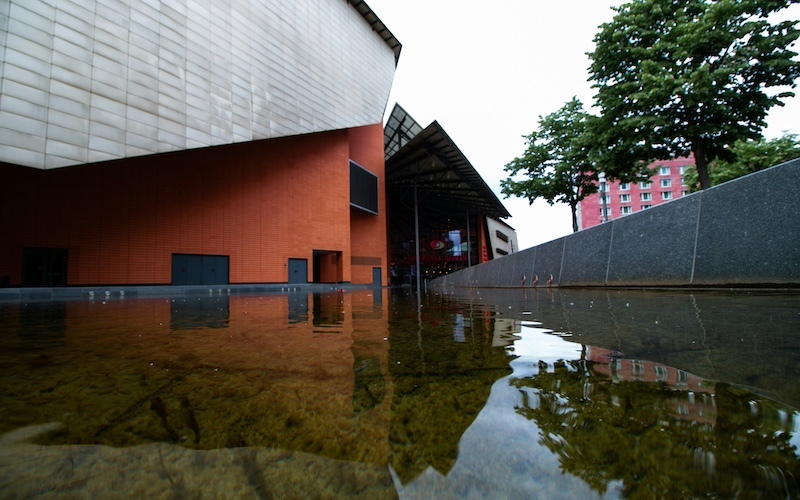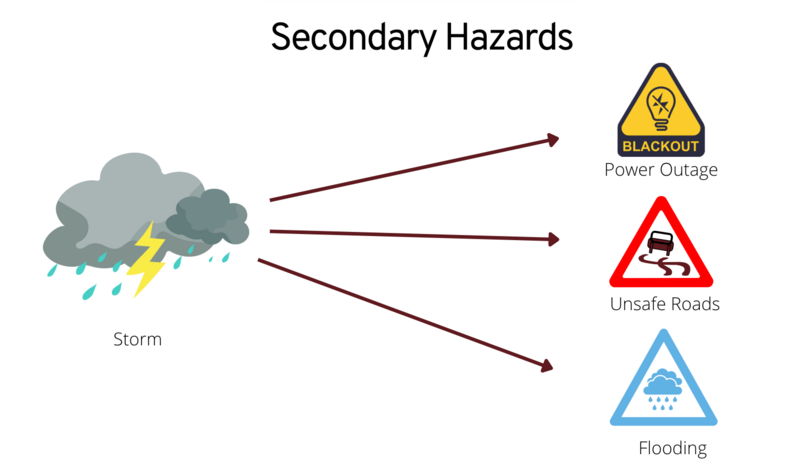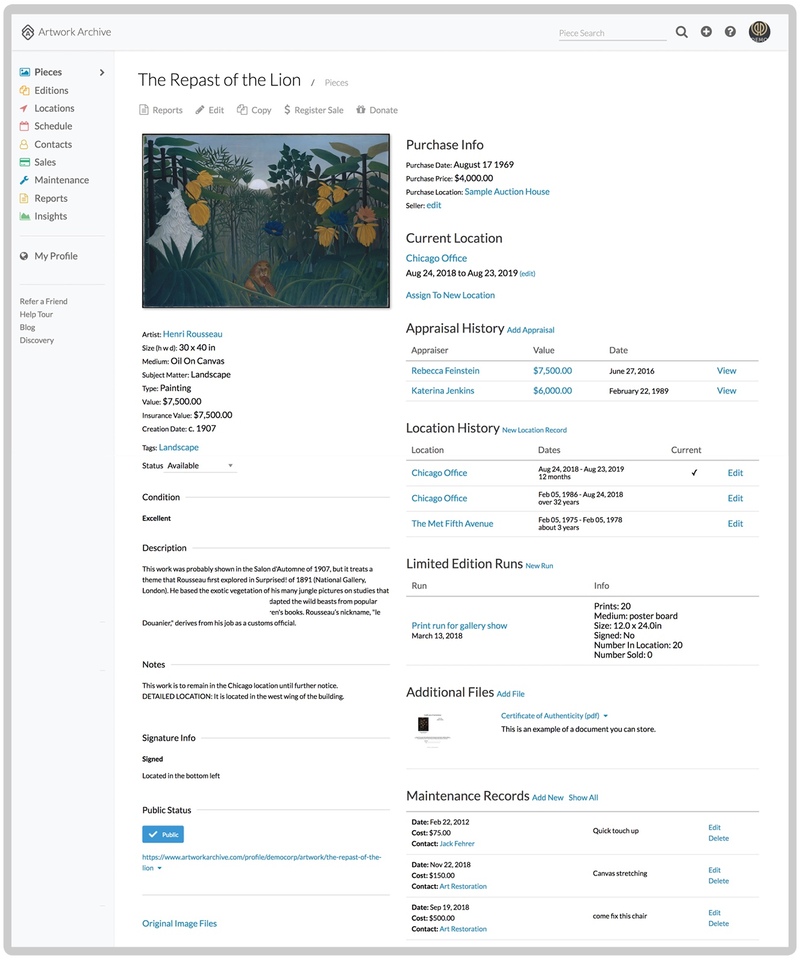 Photo by Leon Seibert on Unsplash
Photo by Leon Seibert on Unsplash
Disasters don’t wait for a convenient time to strike—is your collection prepared?
Emergencies are inevitable—but chaos doesn’t have to be.
In a recent webinar hosted by Artwork Archive and led by collections care expert Rebecca Kennedy, we explored the crucial role mitigation plays in protecting collections from risk. Whether you're overseeing a city collection, managing a university archive, or stewarding a private or museum collection, Rebecca’s guidance offered a refreshing and realistic approach to building resilience into everyday workflows.
Why mitigation matters more than you think
Emergency preparedness is often misunderstood as something you do after a disaster looms. But the real power lies in mitigation—the small, proactive steps that reduce the chance of harm before an event ever occurs.
Mitigation isn’t just responsible collections care—it’s smart budgeting. As Rebecca emphasized, the cost of rescuing an artifact post-disaster is significantly higher than the cost of protecting it in the first place.
"Prevention and mitigation can be advocated to administrators on a cost basis because they save so much more than recovery and remediation." – Webinar Attendee
This point resonated deeply with attendees—many of whom shared that one of their biggest challenges is getting institutional buy-in for emergency planning. The session gave them new tools and language to advocate for that support.
“I have a better sense of the different tools available to get institutional buy-in for emergency planning.” – Webinar Attendee
From visual frameworks like risk prioritization charts to examples of scalable solutions, Rebecca’s guidance helped attendees make the case that mitigation isn't a nice-to-have–it's a cost-saving, collection-saving necessity.
Common vulnerabilities collections face
During the webinar, Rebecca outlined the many roadblocks that institutions face when it comes to disaster preparedness. These vulnerabilities aren’t just inconvenient—they’re risky liabilities that can amplify the damage when disaster strikes:
-
Lack of funding for preventive measures or emergency supplies
-
Buildings in disrepair that are more susceptible to hazards
-
Limited leadership buy-in, making it hard to prioritize planning
-
Poor city infrastructure, such as unreliable utilities or drainage systems
-
Lack of staff training or resources to act effectively during emergencies
-
Understaffing, which leaves no bandwidth for proactive planning
-
Neglected objects that are undocumented, unmonitored, or improperly stored
-
No consensus among staff on emergency priorities or responsibilities
-
Missing digital backups, making recovery more difficult after loss
-
Unreliable telecommunication systems, impeding emergency response
-
Fear of failure—a mindset of “If we don’t try, we can’t fail,” which stalls action
Each of these issues is a crack in the foundation of preparedness. The good news? Identifying your vulnerabilities is the first step toward strengthening your emergency response—and ultimately, your collection.
 Illustration from Emergency Preparedness webinar
Illustration from Emergency Preparedness webinar
Know Your Hazards: Primary vs. Secondary Risks
One of the most valuable distinctions Rebecca covered in the webinar was the difference between primary and secondary hazards—a critical concept in effective emergency planning.
-
Primary hazards are the initial, direct threat—think wildfire, earthquake, flood, or hurricane.
-
Secondary hazards are the ripple effects caused by that primary event—like mold from water damage, power outages, or sprinkler activation during a fire.
Why does this matter?
Because many of the most devastating impacts to collections come not from the disaster itself, but from the cascade of failures and exposures that follow. Water used to extinguish a fire, for example, can be just as damaging as the flames.
Mitigation strategies must account for both. That means:
-
Elevating objects off the floor (to prevent water damage)
-
Storing vulnerable items away from pipes or vents
-
Having backup power for environmental controls
-
Using inert, protective materials in storage that resist mold
-
Perform regular inspections of your systems like security & sprinkler
Understanding and planning for secondary hazards helps you move from reactive to strategic—and ultimately, makes your emergency response more effective and less costly.
“The difference between primary and secondary hazards was a great takeaway—really helped me rethink how to prioritize.” – Webinar Attendee
Preventative care that works
Rebecca laid out an actionable framework that any institution can adapt, regardless of size or budget:
-
Conduct holistic risk assessments: Consider not just environmental hazards, but also vulnerabilities introduced by storage, staffing, and recordkeeping.
-
Make mitigation part of annual workflows: Integrate collections care tasks into yearly planning—not as an afterthought. Rebecca stressed that mitigation is a process rather than a project.
-
Don’t overcomplicate your emergency plan: Start with methodology and fill in details with actual training sessions. Simplicity = sustainability.
And the biggest takeaway? Even homemade or low-cost solutions are better than doing nothing at all.
Build a stronger collection—every day
“Little daily tasks related to collections care can have a big impact.”
What do mitigation strategies look like in practice?
-
Proper storage: Choose shelving over cabinets where airflow and accessibility are concerns.
-
Up-to-date condition reports: Regularly update records to assess and track vulnerabilities.
-
Staff training: An emergency plan is only as good as it is used. Make sure everyone knows what to do—and what not to do—before an emergency occurs.
-
Use digital tools: A platform like Artwork Archive lets you access everything—object records, locations, images, insurance documentation—instantly from anywhere.
And one of the most critical, yet underrated tools?
Photos. High-resolution, well-lit, well-labeled images.
Most registrars would agree that photos are essential for cataloging, but have you ever considered that they could be your only hope of identifying an object after a fire, flood, or collapse? If a painting is charred or water-damaged beyond recognition, a high-quality image may be the only way to prove ownership, file an insurance claim, or start a conservation process.
Every bit of documentation—especially visual—is a form of risk mitigation. And building those habits into your everyday workflow is how you create a collection that’s not only well managed, but resilient.
“I need to make sure our entire permanent collection is in Artwork Archive, with condition reports." - Webinar Attendee
 Image of an object record within Artwork Archive, an online collection management system used by collections of all sizes and types to digitize, organize and preserve their cherished objects.
Image of an object record within Artwork Archive, an online collection management system used by collections of all sizes and types to digitize, organize and preserve their cherished objects.
When less is more: deaccessioning as a mitigation strategy
Another powerful—and often overlooked—form of risk mitigation? Reducing the size of your collection.
Several attendees noted that not every object in their care is essential to retain. In fact, keeping unnecessary or low-priority items can create additional risk. Why? Because if it's in your collection, you're responsible for it—including during a disaster. As Rebecca mentioned:
If it’s damaged, you’ll need to respond. And that means time, money, and resources you could have allocated elsewhere.
Deaccessioning with intention allows you to focus your limited storage, conservation, and emergency resources on the objects that matter most. It also lightens the burden of emergency response, reducing the number of pieces that need to be assessed, handled, or moved in a crisis.
Far from being a loss, thoughtful deaccessioning is a proactive collections care decision—and a key part of any sustainable emergency preparedness plan.
Help funders and leaders say “Yes”
Mitigation planning isn’t just good for collections—it makes your institution more fundable. Grantors and donors increasingly want to see that you’ve done your homework.
Use your risk assessment data and your planning process to demonstrate:
-
Strategic thinking
-
Fiscal responsibility
-
Long-term care for cultural assets
As one attendee noted: “This validated our existing actions and gave us new tools to talk with leadership.”
Final takeaways from the field
The webinar closed with some truly insightful reflections from participants:
-
"Document, document, document."
-
"Even a limited collection needs a plan."
-
"Be like a Girl Scout—be prepared."
Emergency preparedness doesn’t have to be intimidating. Start small. Think strategically. And know that every action you take today is an investment in your collection’s tomorrow.
Watch the full webinar recording here.






